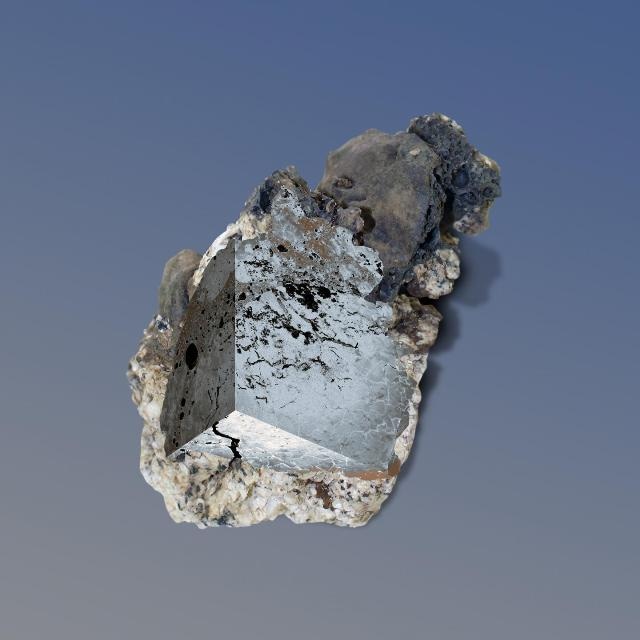Apr 27 2016
A team of researchers from Washington State University (WSU) are looking at ancient materials from various parts of the world to help with the issue of nuclear waste storage and disposal. They published their research findings on ancient glass and rock defense walls in American Ceramic Society Bulletin (May issue).
 A sample of a fused Broborg hill-fort glass overlaid with cross-sectional X-ray tomography data. This non-destructive technique lets scientists image key internal portions of the sample. (Photo credit: Washington State University)
A sample of a fused Broborg hill-fort glass overlaid with cross-sectional X-ray tomography data. This non-destructive technique lets scientists image key internal portions of the sample. (Photo credit: Washington State University)
The U.S. Department of Energy (DOE) is constructing the world’s largest radioactive waste treatment plant at the Hanford nuclear site in eastern Washington, with the aim to cleanup 56 million gallons of chemical and radioactive waste. Researchers hope to convert the waste, which is contained in underground storage tanks, into durable glass that can be stored for many decades. However, they have to gain knowledge on glass corrosion, performance, and alteration over that period of time.
Technique ‘like nowhere else in the world’
The WSU team, led by Jamie Weaver, a doctoral student in chemistry, are analyzing materials from the Broborg hill-fort in Sweden. A tribe that inhabited the region about 1,500 years ago melted rocks to toughen fortifications against invaders. The technique they used involved piling up boulders left behind by ancient glaciers into two large rings. Next they put black amphibolite rocks on top of it, coated the wall with charcoal, and then burned it. The rock began to melt, and it infiltrated the boulders and cooled as glass, which acted as adhesive for the wall.
The technique is like nowhere else in the world. They heated the rock until it melted – and it is still quite intact 1,500 years later.
John McCloy, Associate Professo, School of Mechanical and Materials Engineering, WSU
The Broborg site is important as the researchers know how the glass was created, its age, and wear history. This information will help them enhance their models for extended environmental protection.
We need relevant timescales.
John McCloy, Associate Professo, School of Mechanical and Materials Engineering, WSU
The project is run by the DOE’s Office of River Protection (ORP), which is creating a testing protocol for nuclear glass to comply with U.S. Environmental Protection Agency disposal regulations.
Pre-technology expertise inspiring
Weaver, an intern at DOE’s Pacific Northwest National Laboratory (PNNL), stated that she has immense admiration for these ancient people and their methods as she researched about them.
Without electricity and all the technology that we have today, they did some really cool work. It’s pretty awesome how smart and creative they were.
Jamie Weaver, Doctoral Student, WSU
DOE environmental management supports the research, and the research is done in partnership among WSU, the National Historical Museums and Luleå University in Sweden, PNNL, and the Smithsonian Institution’s Museum Conservation Institute.
The research falls under WSU’s Grand Challenges initiative to motivate research activities that address some of society’s tough issues. This is especially significant to the challenge of “Sustainable Resources for Society” and its theme of addressing energy needs whilst safe-guarding the environment.